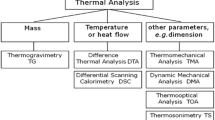Abstract
Over the last 40 years, there has been continuous evolution in the design of voice-band modems-starting at a data rate of 300 bits per second in the late 1950s, a rate of 33,600 bits per second has been achieved in 1995. Realising such high data rates over the voice band of 3400 Hz is a remarkable feat, made possible by combining sophisticated techniques from three disciplines, communication theory, signal processing and information theory. In this article, we briefly describe certain advanced ideas, which led to data rates very close to the channel capacity limit, established by Shannon.
Similar content being viewed by others
Suggested reading
J G Proakis,Digital Communications (small third edition), McGraw-Hill, 1995.
R D Gitlin, J F Hayes and S B Weinstein,Digital Communication Principles, Plenum Press, 1992.
Author information
Authors and Affiliations
Corresponding author
Rights and permissions
About this article
Cite this article
Reddy, V.U. Voice-band modem: A device to transmit data over telephone networks. Reson 6, 60–70 (2001). https://doi.org/10.1007/BF02907366
Issue Date:
DOI: https://doi.org/10.1007/BF02907366




